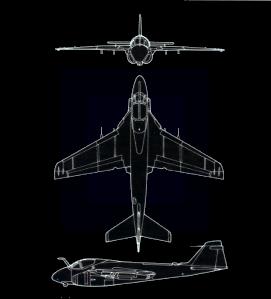| Performance |
| Action | | Data |
| Ceiling | | 42,500 ft (12,954 m) |
| Max Tow / Max Lift | | 9,300 lb (4,218 kg) Thrust |
| Payload | | 18,000 lb (8,165 kg) |
| Topspeed | | |
| at sea level | 560 knots (1,038 km/h) (Mach 0.85) |
| | at hight | |
| Cruise | | 400 knots |
| Combat Radius | | 316 naut mi (595 km) @ full load |
|































